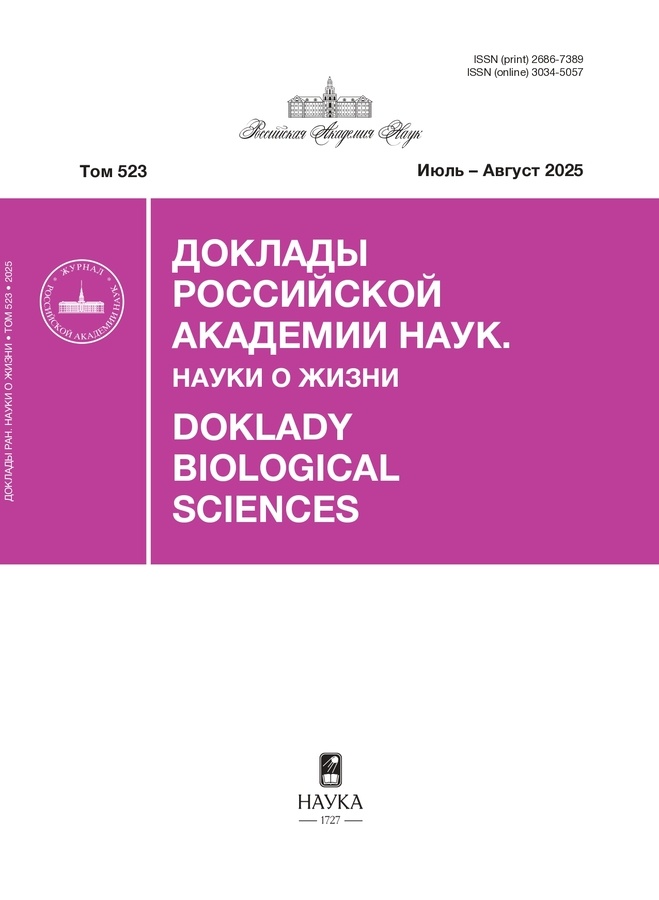WOOD POROSITY: UNIVERSAL PARAMETER FOR DENDROCLIMATIC ANALYSIS
- 作者: Khudykh T.A.1, Belokopytova L.V.2,1, Babushkina E.A.2,1, Vaganov E.A.1,3
-
隶属关系:
- Institute of Ecology and Geography
- Khakass Technical Institute
- Department of Dendroecology, V. N. Sukachev Institute of Forest
- 期: 卷 523, 编号 1 (2025)
- 页面: 485-490
- 栏目: Articles
- URL: https://medjrf.com/2686-7389/article/view/693512
- DOI: https://doi.org/10.31857/S2686738925040183
- ID: 693512
如何引用文章
详细
作者简介
T. Khudykh
Institute of Ecology and Geography
Email: khudykta@gmail.com
Siberian Federal University, Krasnoyarsk, Russian Federation
L. Belokopytova
Khakass Technical Institute; Institute of Ecology and GeographySiberian Federal University, Abakan, Russian Federation; Siberian Federal University, Krasnoyarsk, Russian Federation
E. Babushkina
Khakass Technical Institute; Institute of Ecology and GeographySiberian Federal University, Abakan, Russian Federation; Siberian Federal University, Krasnoyarsk, Russian Federation
E. Vaganov
Institute of Ecology and Geography; Department of Dendroecology, V. N. Sukachev Institute of ForestSiberian Federal University, Krasnoyarsk, Russian Federation; Krasnoyarsk, Russian Federation
参考
- Fritts, H., Tree Rings and Climate, New York: Academic Press, 2012.
- Schweingruber, F.H., Microscopic Wood Anatomy: Structural Variability of Stems and Twigs in Recent and Subfossil Woods from Central Europe, Birmensdorf: Swiss Federal Institute for Forest, Snow and Landscape Research, 1990.
- Vaganov, E.A., Hughes, M.K., and Shashkin, A.V., Growth Dynamics of Conifer Tree Rings: Images of Past and Future Environments // Ecol. Stud. 2006. Vol. 183.
- Babushkina, E.A., Belokopytova, L.V., Zhirnova, D.F., et al. // Dendrochronologia. 2019. Vol. 53. Р. 114–124.
- Pandey, S. // J. Wood Sci. 2021. Vol. 67. № 1. Р. 24.
- Garcia-Gonzalez, I., Souto-Herrero, M., and Campelo, F. // IAWA J. 2016. Vol. 37. № 2. Р. 295–314.
- Zimmermann, M.H., Xylem Structure and the Ascent of Sap. Berlin–Heidelberg: Springer-Verlag, 1983.
- Kirdyanov, A.V., Vaganov, E.A., and Hughes, M.K. // Trees. 2007. Vol. 21. Р. 37–44.
- Silkin, P.P., Kirdyanov, A.V., Krusic, P.J., et al. // J. Sib. Fed. Univ. Biol. 2022. Vol. 15. № 4. Р. 441–455.
- Khudykh, T.A., Belokopytova, L.V., Yang, B., et al. // Biology. 2024. Vol. 13. № 4. Р. 223.
- Sperry, J.S., Hacke, U.G., and Pittermann, J. // Am. J. Bot. 2006. Vol. 93. № 10. Р. 1490–1500.
- Cook, E.R. and Kairiukstis, L.A., Methods of Dendrochronology: Applications in the Environmental Sciences, Boston: Kluwer Academic, 2013.
- Rinn, F., TSAP-Win. Time Series Analysis and Presentation for Dendrochronology and Related Applications, Version 0.59 for Microsoft Windows, Heidelberg: Rinntech, 2003. Р. 91.
- Holmes, R.L. // Tree-Ring Bull. 1983. Vol. 43. Р. 69–78.
- Carrer, M., Castagneri, D., Prendin, A.L., et al. // Front. Plant Sci. 2017. Vol. 8. Р. 737.
- Babushkina, E.A., Belokopytova, L.V., Zhirnova, D.F., et al. // Int. J. Biometeorol. 2018. Vol. 62. Р. 939–948.
补充文件









